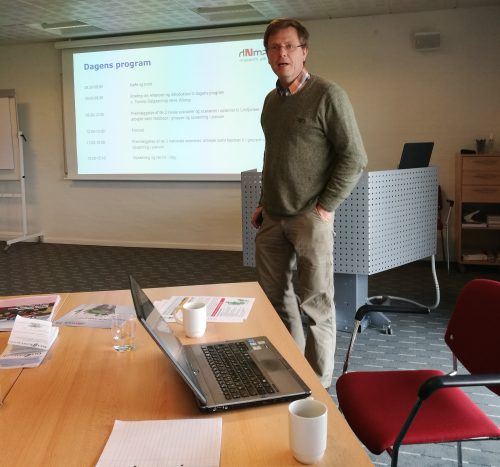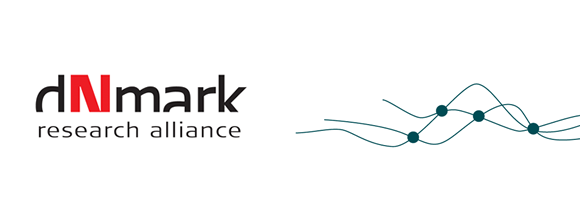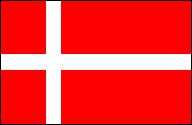On 21 April, 15 stakeholders in the project of dNmark were gathered for an intense day at Koldkærgaard. The alliance participants received valuable feedback on 6 solution scenarios (in draft). The solution scenarios cover a wide field of options, from optimising nitrogen consumption, improving resource efficiency and public health to reduction of environmental and climate impact.
Each solution scenario was presented to the stakeholders, who were then divided into the 3 groups they represented: companies, authorities or farmers. The individual scenarios were discussed using a discussion guide based on practicability, economy and general ranking. As a conclusion, the note takers presented the ideas of the individual groups to the entire assembly.

Tommy Dalgaard presents the program of the day.
Geographic targeting – 3 local scenarios
3 Local scenarios with base in Hagens Møllebæk (near Skive), Henne Mølle Å (near Varde) and the entire Limfjord catchment were the first solution scenarios under consideration. In the cathment of Hagens Møllebæk, the challenge of emission of nitrogen to the Limfjord was resolved with the placement of constructed wetlands and wetlands. The agriculture group was in good support for this, as it was the view that it gave the least impact on agriculture production area with the greatest possible environmental benefits, although it may be demotivating to be part of a wetland project if it either takes too long time or ends up failing. From the authorities, focus were on that wetlands and constructed wetlands don’t takes groundwater issues into account, while the business group also focused on failed wetland projects and groundwater issues.
The next local solution scenario was based on the Henne Mølle Å catchment. The solution was to divide the catchment into different zones, depending on how much retention there is from the individual field to the nearest watercourse (i.e. how much nitrogen is retained before it reaches the watercourse). The farmer with a field in Zone 1 cannot fertilize his fields at all, while the farmer in Zone 4 can fertilize to an economic optimum. Farmers and authorities agreed that such a system would imply a huge administrational burden, while the argument from the business group was that it would provide incentives for the farmer to increase the utilization rate of his fertilization in areas with strict regulations on fertilization.

Line Block Hansen explains the cost-minimization model
The last local scenario was based on the entire Limfjord catchment. The idea is, in a Geographic Information System (GIS), to analyse data from the catchment and to rate each field block in regard to the economic efficiency of introducing nitrogen measures expressed in DKK/ha. That creates the the basis for proposing an optimal geographic placement of different nitrogen measures. Both the business and agriculture group could see the upsides and agued that it would make whole society wealthier while the authority group was worried about how it should be regulated and who would pay for the cost of the changed practice in those areas that were vulnerable, especially if the designated areas were overlapped by several municipalities.
N-footprint and changed consumption patterns
The second half of the workshop focused on national scenarios. The first scenario introduced a tool named N-footprint, as you know it from a carbon footprint. The idea is to aware consumers about what their choices in relation to the purchase of food and other goods, such as energy and transport, means for the release of environmentally harmful nitrogen compounds per person or, for example which effect reduced food waste would have. As such, this information might lead consumers to change heir consumption behavior, and thus the harmful effects of nitrogen.
The business group’s attitude was that the approach was a good idea as it could create a platform for promoting “environmentally friendly products”, but they also saw challenges becuase products that have a low N-footprint might have a high carbon footprint. The authorities argued that it is possible to influence consumers’ N-footprint by making VAT differentiatio. For example could it be by lowering VAT on goods that have a low N-footprint or raise it on meat. However, the authority group belived that making the consumers behave differently would be a challenge.
In the agricultural group, consideration was that if it was possible to think of N-footprint and leaching or emission of nitrogen in the same context and if it makes a difference to the environment. Otherwise, there were positive considerations about using it as branding and thereby create ad more value to the products. The agricultural group agreed that it would produce the product demanded by the consumers provided it is at a reasonble price
Technology – acidification
Full acidification of manure was considered as the next scenario. Acidification is a technology that specifically handles evaporation of ammonia, which occurs both in the field and inside the stable. The message from the agricultural group was that it would be very expensive to fully install the technology, both in cattle and pig farms, and that stable acidification with biogas plants is difficult because the technologies competes with each other. Likewise, after the nitrogen quota is revoked, there is no incentive to achieve better utilization of nitrogen.
The business group agreed that the today’s technology is very advanced, but that funding is lacking, and that there is also a difference in cost effectiveness, depending on whether you are using stable acidification or acidification in the field. In theauthorityl group, considerations were generally positive and, in particular, the EU demand to reduce ammonia emssion by 24 % by 2020 makes the technology highly relevant.
Technology – biogas
Today’s last scenario concered the biogas potential. The message from the authoritt group was positive, as biogas concerns both a nitrogen and climate problem. The agricultural group was also positive as it is a good business case to sell biogas and use the biogas slurry as fertilization. The business group stated biogas slurry have a higher risk of leaching due to more accessible nitrogen in the slurry, but that it could be solved with nitrogen inhibitors. It was suggested that it was obvious to combine biogas with a subsequent acidification of the slurry that are used for fertilization, and that this should be investigated further.
The responsible for the individual solution scenarios will now review the feedback and adjust the solution scenarios if relevant, as well as a summary of the points from the feedback will be included as an attachment to each of the scenarios.
Scenario ranking. 1 is a very sad smiley and 5 is a very happy smiley
|
Companies |
Farmers |
Authorities |
|
| Local scenario – Hagens Møllebæk |
3 |
4 |
2-3 |
| Local scenario– Henne Mølle Å |
1-5 (multiple opinions) |
2 |
3-4 |
| Limfjord Catchment |
2-3 |
2 |
2 |
| N-footprint |
3-4 |
4 |
2 |
| Full acidification |
4 |
1 |
4-5 |
| Biogas |
3-4 |
4 |
4 |



 Danish
Danish